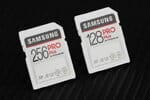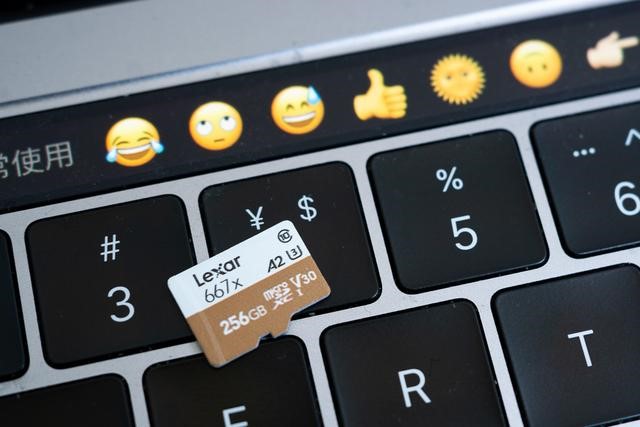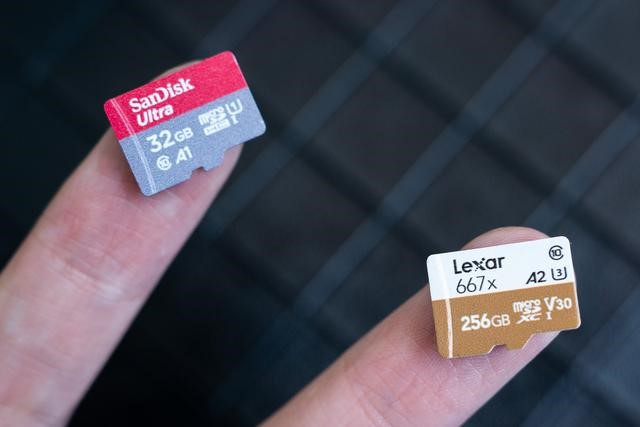Latest Posts
Your Micro sd memory card needs to be upgraded.
Not long ago, in order to expand the capacity of the Nintendo Switch console and install a few more digital games, I bought a Lexar 667x micro sd card. This memory card has a capacity of up to 256GB, a reading speed of up to 100MB/s, and a writing speed of up to 90MB/s. Theoretically, it can not only meet the needs of the Switch game console, but also meet the needs of 4K video shooting. The price is not expensive too, you can get almost 1GB of high-speed storage for only 0.3$, which is a real bargain.
In fact, I have already bought a micro sd cards 2 years ago. It is a bulk sd card 32GB TF card with a nominal reading speed of 90MB/s and a writing speed of “slightly slower”. However, in actual use, every time I copy a large file, I always feel that the writing speed of the Bulk micro sd cards is very slow, which is not consistent with my former impression. However, Nintendo officially claims that the built-in card reader supports the fast UHS-1 standard. This type of SD card has a theoretical speed of 104MB/s. Which memory card is more suitable for use? Let’s compare them.
Let’s start with the appearance. In fact, the two looks and the manufacturing process is similar. After all, they are both first-level manufacturers. Lexar 667x TF card has a platinum color cover, which looks very expensive, while bulk sd card 32GB card has a classic red and white color, you can distinguish the brand from a glance. Looking at all the logos on the memory card, we can clearly see that the two memory cards are of different standards.
Lexar 667x is an A2 card, while bulk sd card is an A card; Lexar supports U3 standard, while bulk sd card only supports U1 standard.
A1 and A2 are performance standards formulated for mobile phone memory cards, and their full names are APP Performance A1 (A1) and Performance A2 (A2). Their minimum (sustained) writing speed is 10MB/s, but the random reading and writing performance requirements of the A1 standard are above 1500IOPS and 500IOPS, respectively, while the requirement of A2 standard is greatly improved to 4000IOPS and 2000IOPS, which means that A2’s random reading and writing performance is better.
U1 and U3 are also memory card performance indicators. UHSSpeed Class 1 (U1) represents a minimum (continuous) writing speed of 10MB/s and UHSSpeed Class 3 (U3) represents a minimum (continuous) writing speed of 30MB/s.
Comparing the two cards, we can see that Lexar 667x is significantly higher than bulk sd card on the parameters.
Then came the actual running test. First, I used the ATTO Disk Benchmark test tool. I use file packages with capacity ranging from 0.5KB to 64MB to perform reading and writing tests, in order to understand the performance of the memory card under different file sizes.
Through testing, we can see that Lexar 667x micro sd card has a writing peak speed of 83.3MB s, and a reading peak speed of 94.58MB/s, and it reaches and stabilizes at a peak level after a 128KB file or larger;
The bulk sd card’s peak reading speed is close to 92.84MB/s, but the peak writing speed is only 19.45MB/s, the gap between reading and writing speed is more than 4 times, which is a bitshocking.
We then test the AS SSD Benchmark, which can be used to test storage devices such as solid state drives, memory cards, etc. It mainly test continuous reading and writing, single thread 4KB file random reading and writing, 64 thread 4KB file random reading and writing and other parameters.
From the test results, you can see that Lexar’s final score almost doubled that of bulk sd card’s. From the comparison of sub-projects, Lexar has far exceeded the performance of bulk sd card in continuous reading and writing, random reading and writing of 4KB files, and access time.
CrystalDiskMark can customize the number of tests and the size of test file, mainly test the continuous / random reading and writing speed of several files such as 512KB and 4KB. In comparison, Lexar 667x and bulk sd card have similar sustained read speeds, but there are a huge difference in sustained writing speed.
Finally, we copy the WIN7 installation package from the computer to the memory card. It can be seen that the writing speed of Lexar 667x basically stabled at about 75MB/s, which is close to the theoretical and test values; while the speed of bulk sd card memory card is only about 14.8MB/s, and the continuous transmission speed is not so stable.
From the above four tests, we can see that the restraint really appears on the old bulk sd card memory card. Although the reading speed can reach as high as 90 ~ 100MB/s, some memory cards will be significantly slower in writing speed. If you are a rookie who doesn’t pay much attention to specific parameters, you may actually feel confused about the reading and writing speed of the memory card. Overall, upgrading to the Lexar 667x TF card is still very cost-effective. Its capacity is larger, the writing speed is four times faster, and the average price per GB of both is actually similar. If your memory card speed can’t meet your requirements, upgrading is the fastest solution.














Leave a comment